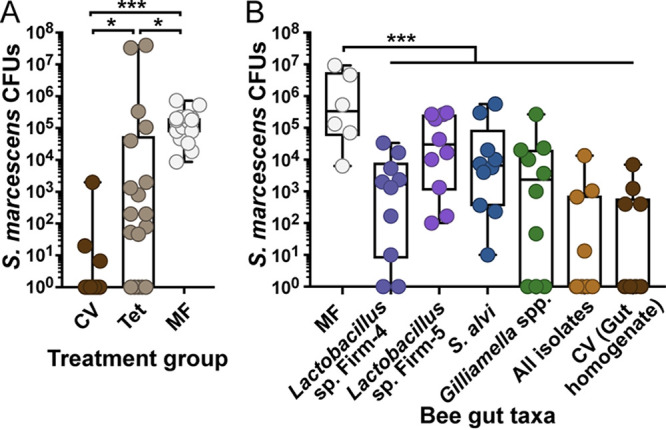FIG 1.

Serratia marcescens is eliminated from the guts of bees colonized by commensal species. (A) Total S. marcescens kz11 abundance in the midgut and hindgut of bees with a conventional, perturbed, or absent gut microbiota. Newly emerged bees from a single hive were inoculated with a conventional gut community (CV), inoculated with a conventional community and later treated with Tet (Tet), or kept microbiota free (MF). *, P < 0.05; ***, P < 0.005, Kruskal-Wallis test with Dunn’s multiple-comparison test. (B) S. marcescens abundance in bees colonized by individual gut taxa. MF bees were inoculated with representative strains of core gut taxa (Lactobacillus sp. Firm-4 DSM 26254 and DSM 26255, Lactobacillus sp. Firm-5 wkB8 and wkB10, S. alvi wkB2, G. apicola wkB1 and PEB0154, and G. apis PEB0162 and PEB0183), all isolates in combination, or homogenized gut of a bee collected from the hive. Bees were exposed for 1 day to 4 × 108 S. marcescens cells/ml in sugar syrup and dissected 1 day after the end of exposure. S. marcescens abundance was quantified by counting CFU. Box and whisker plots show the minimum, first quartile, median, third quartile, and maximum. ***, P < 0.005, one-way ANOVA with Tukey’s multiple-comparison test.
